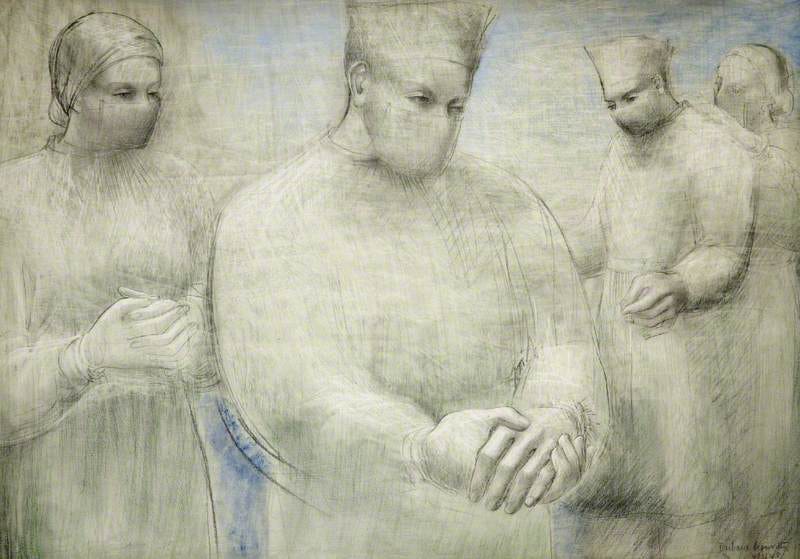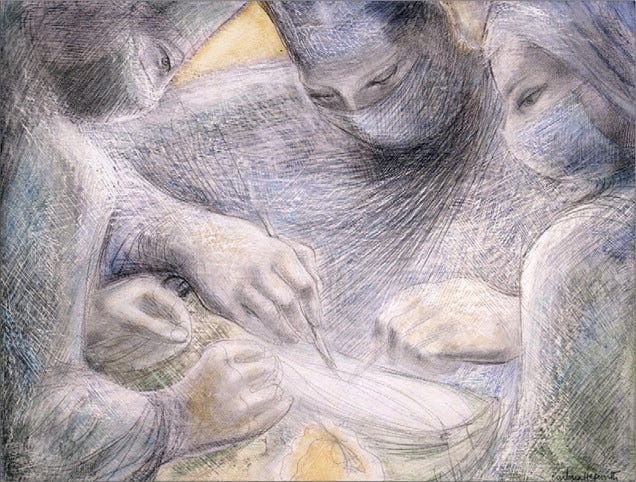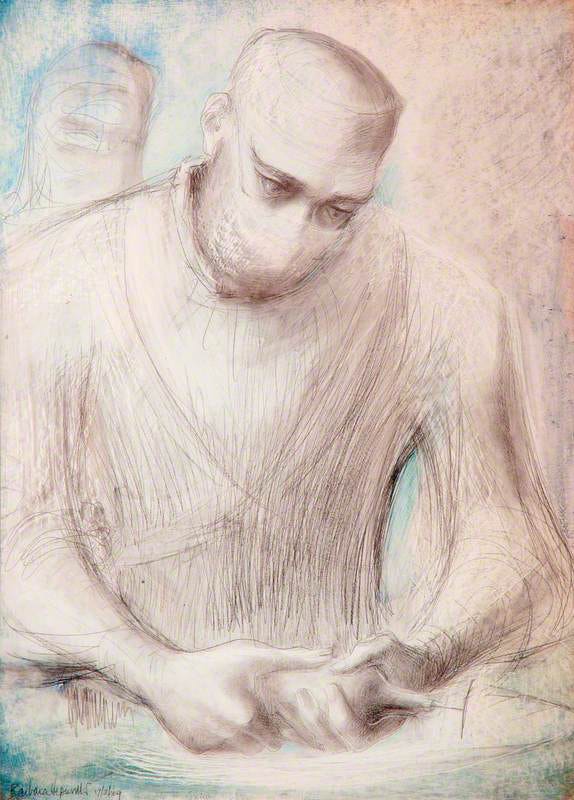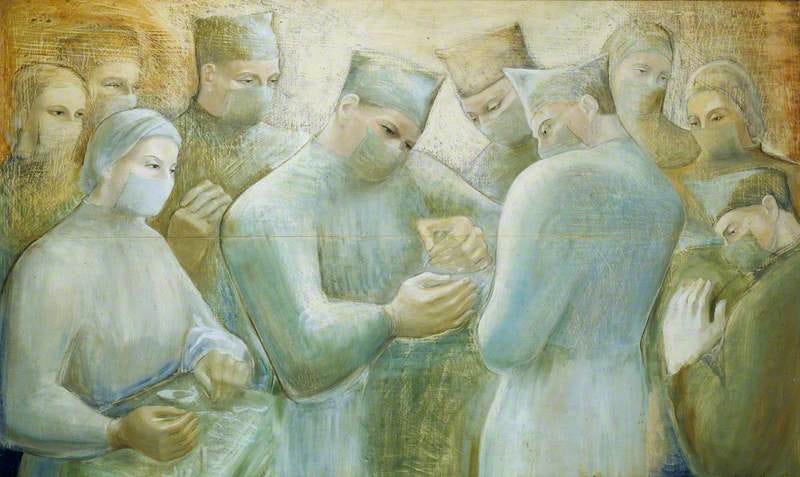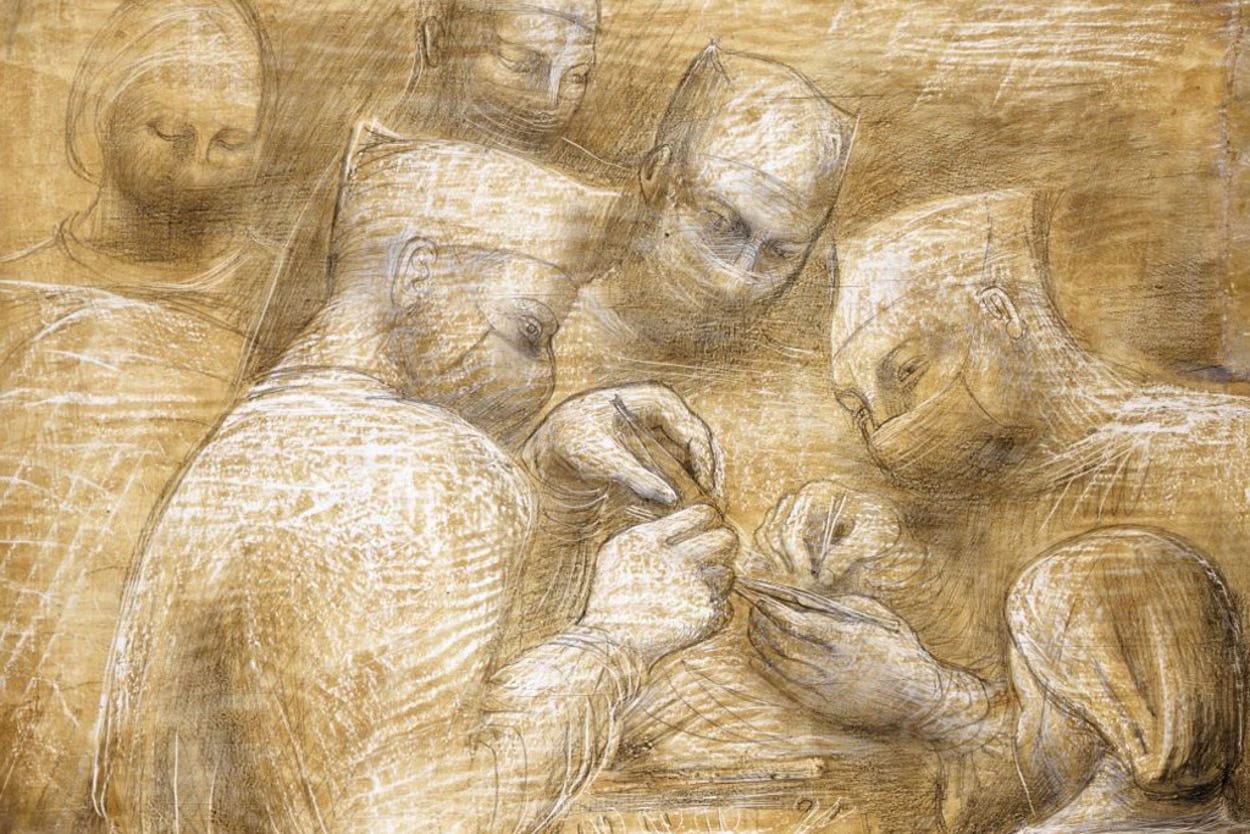
Barbara Hepworth (1903-1975) was an English modernist sculptor renowned for her forms of elegant abstraction. What is a lesser-known yet significant aspect of her art practice was her skill for in situ drawing.
Following her daughter Sarah’s hospitalization in 1944, Hepworth formed a close bond with the surgeon Norman Capener who treated her, which led to an invitation to observe surgeries at clinics across London and Western England. From 1947 to 1949, she created a series of nearly 80 drawings of surgeons in operating rooms.
She worked in ink, crayon and pencil with oil glazes on gessoed surfaces that she carved into…a technique that informed her sculptural practice.1
Hepworth was struck by the parallels between these surgeons and artists, noting the close connection between their approaches, their shared tools and meticulous attention to detail, both aiming to enrich the human experience.
Hepworth’s drawings show the surgeons’ engagement in their work rather than the operations themselves. They capture their dedication, precision and collaboration in the operating room.
'From the very first moment I was entirely enthralled by the classic beauty of what I saw there; classic in the sense that architecture and function were perfectly blended and purity of idea and grace of execution were in complete harmony.'
- Barbara Hepworth
For almost three years, her series produced many diverse portrayals, from distant observations of surgical scenes to intimate studies of the surgeons’ delicate hands.
Keep reading with a 7-day free trial
Subscribe to Illustrated Journalism to keep reading this post and get 7 days of free access to the full post archives.





